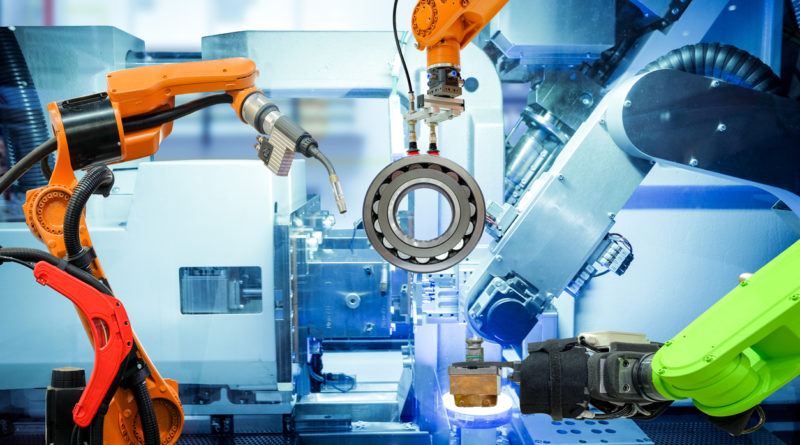Market for Manufacturing Robots
Installation of industrial robots and cobots reached an all-time high. Across the world, there were 517,385 new automated robots installed, which is a 31% increase over the previous year. This amount exceeds pre-pandemic numbers and, even with continued supply chain issues and inflation, the Market for Manufacturing Robots are expected to grow.
These numbers are a clear indication of the rise of manufacturing robots. Recent reports project that the market for manufacturing robots will grow to nearly $31 billion by 2027, which is nearly double the size of the current market. There are several factors driving this market growth, including ongoing labor shortages within the manufacturing industry and manufacturers’ increasing adoption of smart technologies.
Industrial manufacturing robots are the first step in implementing automation for many manufacturers. Their availability, versatility, and quick return on investment make robots a popular choice for manufacturers of all sizes. Learn more about what has helped contribute to industrial robots’ growing market share.
The Different Kinds of Manufacturing Robots
One reason robots have such a significant presence within the manufacturing industry is because of their varying capabilities. There’s a wide range of different automated robots available to manufacturers, that come in different sizes, various price points, and have unique features.
Large industrial robots are an attractive choice for manufacturers with fixed production lines. There is often little variance in the tasks these robots are completing and the product they are manufacturing. Due to the size of these robots, they usually stay in the same place within a workshop or on a production line. These manufacturing robots are designed to work quickly and accurately, continuously creating products that almost always meet quality standards.
Because of these factors, industrial robots are ideal for large-scale manufacturing operations that have repetitive tasks and consistent production. These robots are being installed by more and more manufacturers due to increased efficiency as well as improved worker safety—larger industrial robots can often take over production tasks that are dangerous for human workers.
Cobots, or collaborative robots, are the other type of automated manufacturing robots contributing to market growth. Cobots are smaller and work better alongside human workers as compared to industrial robots. These robots also tend to be more advanced and offer more flexibility, making them useful to manufacturers of all sizes.
Due to their size, cobots can be moved throughout a production line or manufacturing facility. They are also easily reprogrammed, with simple programming software that human workers can adjust to program the cobot for different tasks. Collaborative robots are great for small production manufacturing operations, manufacturing facilities with limited space, and small batch product runs. With the demand for heightened customization and personalization of products, manufacturers are increasingly choosing cobots as their automation solution.
Manufacturing Robots’ ROI
Both cobots and large industrial robots are worth the upfront cost due to their return on investment (ROI) potential. It normally takes 6 to 18 months after installation of an automated robot for manufacturing companies to see a positive ROI. Though the up-front cost is often significant, this relatively short ROI timeframe helps justify the expense for many manufacturers.
An automated robot is usually able to run at 95% efficiency, which is significantly higher than a human worker’s productivity level. It’s not necessarily a straight comparison, as human workers require breaks and off-time whereas robot workers can continuously run. However, the robot’s ability to work nearly nonstop means that it has the same efficiency level as multiple human workers put together.
Robots provide constant, around-the-clock production that significantly increases output without sacrificing quality. In fact, product quality is often improved! Usually, after a facility implements robotic automation, they see a 30% to 50% increase in productivity. With these productivity numbers and quick ROI, it’s no wonder why manufacturing robots are taking over the industrial sector.
The Future of Manufacturing
Cobots and large industrial robots are clearly a great investment for manufacturing companies of all sizes. They substantially increase productivity, improve product quality, and streamline production operations. All these benefits contribute to the market growth of automated manufacturing robots.
But it’s not just these benefits that are propelling the industry forward. More manufacturers are implementing automation because they know that their business will not thrive in the future without advanced manufacturing technologies like these.
The world is becoming increasingly digital, and manufacturers who want to succeed need to start or continue digitizing operations. Automation is often the first step for digital transformations in manufacturing facilities and companies. Automated robots and processes are a necessity for digitally connected factories, and these smart factories are where the manufacturing industry is headed.
To learn more about manufacturing robots and meet with some automated robot vendors, attend WESTEC.

